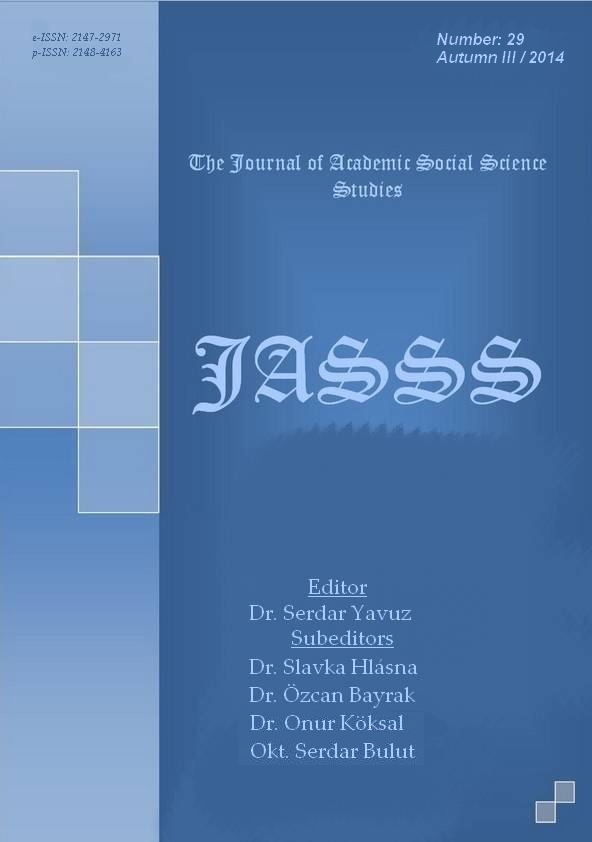Author :
Abstract
‘Ait olduğu toplumsal kesimin ideolojisini yansıtan, toplumsal yapı içerisindeki güç ilişkileri tarafından belirlenen ve aynı zamanda toplumsal yapıyı şekillendiren pratikler’ biçiminde tanımlanabilen söylemin somut ürünleri yazılı ve sözlü olarak üretilen metinlerdir. Metinlerde örtük bir biçimde verilen ideoloji yükleme biçimlerini Eleştirel Söylem Çözümlemesi çerçevesinde yapılan dilsel çözümlemeler sayesinde görünür kılmak mümkün olmaktadır (Sargın, 2010, s. 64). Gazete köşe yazıları toplumsal bir pratik olarak ideolojinin dil aracılığıyla yeniden üretilmesine iyi bir örnek oluşturmaktadır. Köşe yazıları genellikle fikir beyan eden yazılardır. Bu fikirler gazetenin türü ve bakış açısına bağlı olarak ideolojileri açısından önemli ölçüde farklılık göstermektedir (Van Dijk, 1998, s. 21). Köşe yazarları gündemi oluşturan olaylar hakkında ileri sürdükleri düşünceleri mensubu oldukları ideoloji çerçevesinde savunmaktadırlar (Yağcıoğlu, 2002, s. 124). Bu görüşten hareketle, bu çalışmanın amacı farklı ideolojilerin temsilcileri olan gazetelerde yayınlanan gazete köşe yazılarında aynı konunun dil düzleminde nasıl yapılandırıldığını, böylece dil ve ideoloji arasındaki ilişkiyi ortaya çıkarmaktadır. Bütünce olarak yakın geçmişte meydana gelen Gezi Direnişi bağlamında sol, liberal ve muhafazakâr olmak üzere üç farklı ideolojiyi temsil ettiğine inanılan gazetelerden alınan köşe yazıları seçilmiştir. Dilsel çözümleme sonucunda, söz konusu köşe yazılarında yapılan dilsel seçimlerin yazarların, dolayısıyla da temsilcisi oldukları gazetelerin ideolojisine hizmet eder nitelikte olduğu görülmektedir. Ayrıca, bu çalışmanın uygulama basamakları Eleştirel Söylem Çözümlemesine ilişkin yalın bir örnek sergilemesi açısından önem taşımaktadır.
Keywords
Abstract
The concrete products of discourse, which can be defined as a social practice that reflects the ideology of the social section it belongs to, are texts that are produced orally or in written form. By making linguistic analyses within the framework of Critical Discourse Analysis it is possible to expose the implicit ways of loading ideology in texts (Sargın, 2010, s. 64). Op-ed articles are a good example for the reproduction of ideology through language as a social practice. These articles generally express ideas that differ according to the type and the ideology of newspapers (Van Dijk, 1998, s. 21). They defend the ideas they put forth within the frame of the ideology they belong to (Yağcıoğlu, 2002, s. 124). In this line of reasoning, this study aims to find out how the same topic is structured on the linguistic plane by the op-ed articles published in newspapers from different ideological orientations, thus revealing the relationship between language and ideology. As the corpus of the study op-ed articles produced in the context of the Gezi Park protests were selected from three newspapers believed to represent different ideologies namely left, liberal, and conservative ideologies. As the result of the analysis, it is seen that the linguistic choices made in the op-ed articles serve the ideologies of the writers, and thus of the newspaper they represent. Besides, the study is of importance in serving as a plain model for the implementation of Critical Discourse Analysis.





